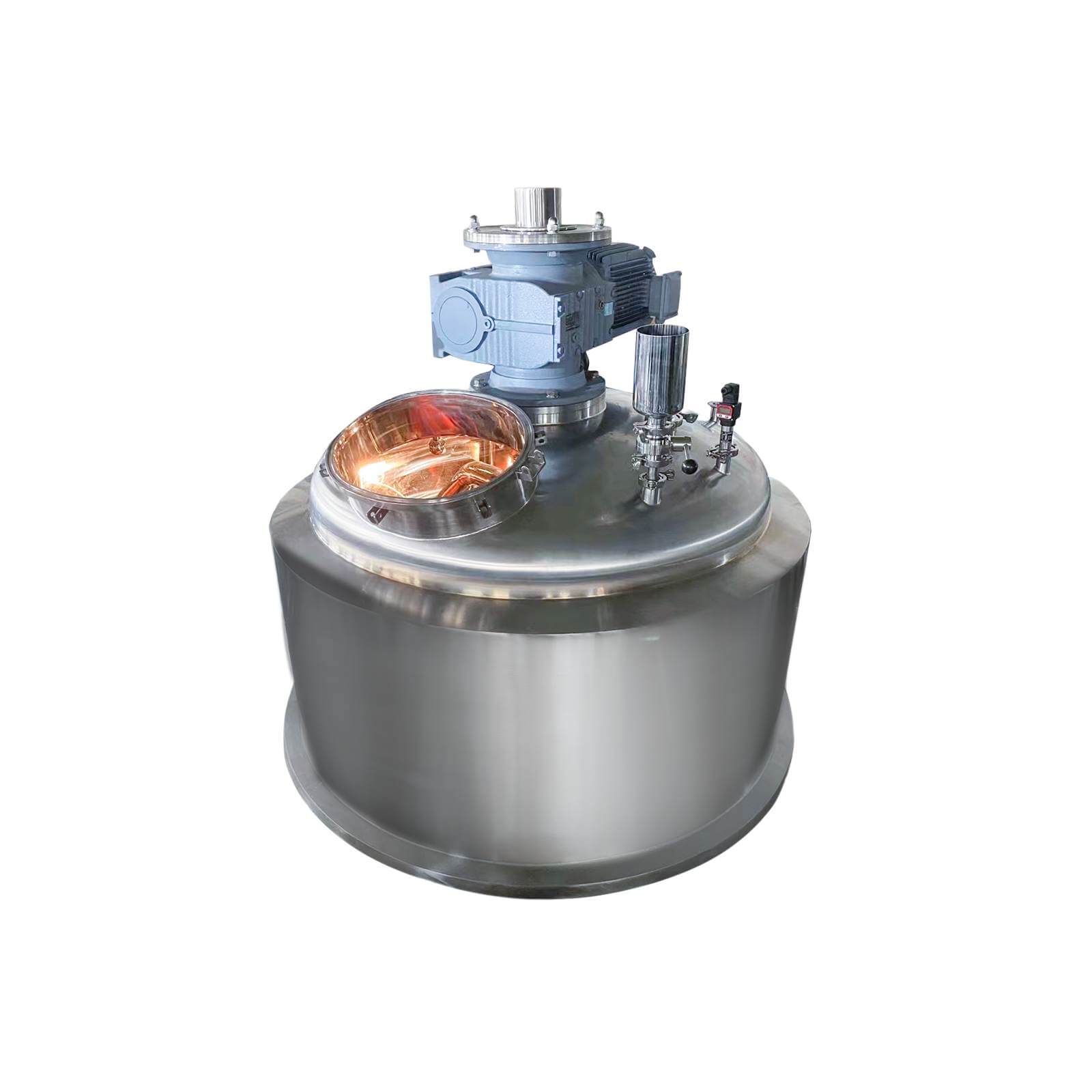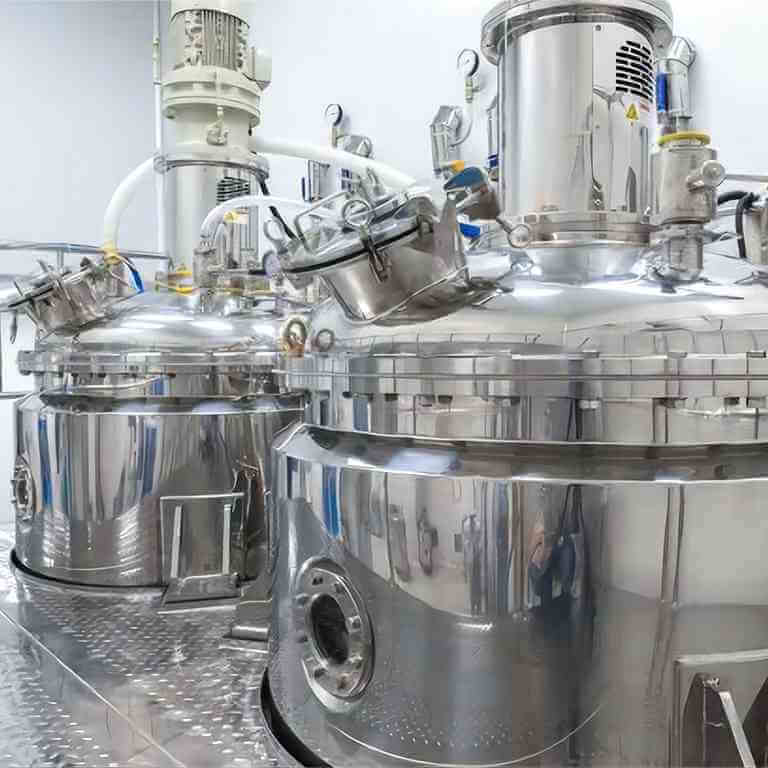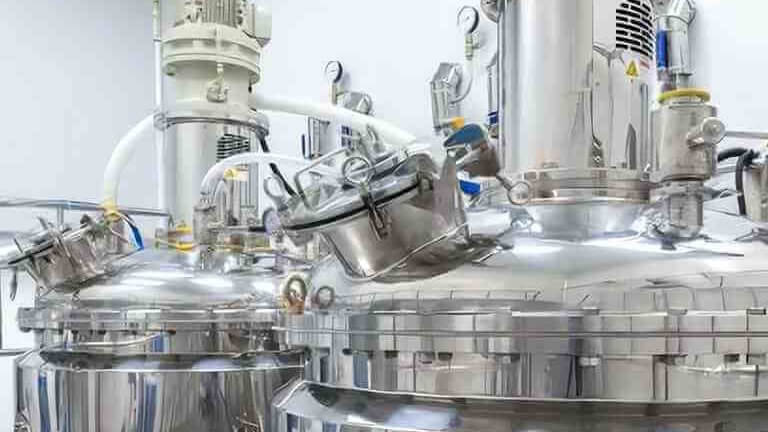

High Pressure Reactor
High-pressure reactor: used in chemical synthesis, catalytic reaction, and other fields
Material
glass, stainless steel (316, 304), carbon steel, others
Capacity (L)
10-10000+
Mixing system
anchor, paddle, frame and others
Heating system
electric heating, oil heating and others
The High-pressure reactor is mainly made of the kettle cover, the kettle body, the strong magnetic coupling stirrer, the high temperature, and high-pressure needle valve, the lower stirring part, the inner cooling coil, the temperature measuring part, the liquid lower pipe, etc.
Request a quoteHigh pressure reactors are widely used in petroleum, chemical industry, pesticides, medicine, food, and other fields to complete vulcanization, nitration, alkylation, condensation, and other processes. It is based on the premise that the substances participating in the reaction are fully mixed. For physical change processes such as heating, cooling, liquid pumping, and gas absorption, a stirring device is required to obtain good results.

Operation steps of high pressure reactor
1. Use a high pressure reactor before starting
① Check whether the high pressure reactor kettle body, agitator, rotating parts, auxiliary equipment, indicating instruments, safety valves, pipelines, and valves meet safety requirements.
②. Check whether water, electricity, and gas meet safety requirements.
2. Operation status of high pressure reactor
① The stirrer of the high pressure reactor should be opened before adding materials. When there is no noise, materials should be added to the high pressure reactor, and the feed amount should not exceed the process requirements.
② Before opening the steam valve, first open the return valve of the high pressure reactor and then enter the valve. The steam valve should be opened slowly to preheat the jacket and gradually increase the pressure. The pressure inside the jacket is not allowed to exceed the specified value.
③ The steam valve and the cooling valve cannot be started at the same time, and the gas passing through the steam pipeline is not allowed to hit or collide.
④ When opening the cooling water valve, you should first open the return water valve and then enter the water inlet valve. The cooling water pressure of the high pressure reactor should not be lower than 0.1mpa and not higher than 0.2mpa.
⑤ For the water ring vacuum pump of the high pressure reactor, the pump should be started before supplying water, stop the pump, and then add water after stopping the pump, and the water in the pump should be removed.
⑥ Check the operation of the high pressure reactor at any time. If any abnormality is found, it should be shut down for maintenance.
⑦ When cleaning the high pressure reactor, do not use alkaline water to brush the high pressure reactor, and be careful not to damage the enamel.
3. After the high pressure reactor stops operating
① Stop stirring, cut off the power supply, and close various valves.
② When shoveling the pot, be sure to cut off the power of the mixer, hang a warning sign, and have someone monitor it.
③ High pressure reactors must undergo regular technical inspections according to the requirements for pressure vessels. If they fail the inspection, they must not be operated.

Key points for choosing a high pressure reactor
The high pressure reactor is an innovation of typical reaction equipment used in magnetic transmission devices. It fundamentally solves the problem of shaft seal leakage that cannot be overcome by previous packing seals and mechanical seals, without leakage and pollution. It is an ideal chemical reaction device under high temperatures and pressure, especially suitable for chemical reactions in flammable, explosive, and toxic media, and shows its superiority.
The key points for selecting a high pressure reactor are as follows
1. Currently, the commonly used materials in high pressure reactors are 304 and 316 stainless steel, but when the reaction medium is highly corrosive, Hastelloy, nickel alloy, etc. can be selected.
2. For stainless steel materials where the pressure is not too high and the reaction medium is corrosive, enamel materials can be selected.
3. If the pressure requirement is high and the reaction medium is corrosive to metals, non-ferrous metals such as nickel, titanium, tantalum, etc. can be selected in the stainless steel lining according to the reaction medium and reaction temperature.
The high pressure reactor is an accurate and precise equipment. Rapid cooling and rapid heating are prohibited during the reaction process to prevent excessive temperature stress from causing cracking of the high pressure reactor kettle body. After the reaction is completed, cool it first, choose water cooling (exothermic reaction) or air cooling, then release the high-pressure gas in the high pressure reactor to reduce the pressure to normal pressure, and then loosen the bolts symmetrically and equally. After each operation, the residue on the kettle body and lid should be removed. All sealing surfaces on the high pressure reactor should be cleaned frequently and kept dry. Hard objects or soft objects with rough surfaces are not allowed to be cleaned.




